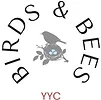
If these frigid February temperatures have you thinking longingly about spring, we thought you might be cheered up with talk of hummingbirds. We will look at two species and talk a bit about feeders.
Rufous Hummingbird
The feistiest hummingbird in North America is the Rufous Hummingbird. The brilliant orange male and the green-and-orange female are relentless attackers at flowers and feeders. Rufous hummingbirds are wide-ranging, and breed farther north than any other hummingbird. Look for them in spring in California, summer in the Pacific Northwest and Alaska, and fall in the Rocky Mountains as they make their annual circuit of the West. During their long migrations, Rufous Hummingbirds make a clockwise circuit of western North America each year. They move up the Pacific Coast in late winter and spring, reaching Washington and British Columbia by May. As early as July they may start south again, traveling down the chain of the Rocky Mountains.
Ruby-Throated Hummingbird
A flash of green and red, the Ruby-Throated Hummingbird is eastern North America’s sole breeding hummingbird. But in terms of area, this species occupies the largest breeding range of any North American hummingbird. These brilliant, tiny, precision-flying creatures glitter like jewels in the full sun, then vanish with a zip toward the next nectar source. Feeders and flower gardens are great ways to attract these birds. Enjoy them while they’re around; by early fall they’re bound for Central America, with many crossing the Gulf of Mexico in a single flight.
Two Types of Hummingbird Feeders
There are two basic types of hummingbird feeders. First are inverted feeders which have a central reservoir that is suspended over the feeding ports. Nectar is released from above, keeping the ports filled at optimum levels. There are some advantages to inverted feeders. They are easier to check for nectar levels and they typically have a greater capacity. Disadvantages are, they are more prone to leakage and they can attract insects. They can be more difficult to clean and fill.
The second type is a saucer feeder. These have a simple dish filled with nectar that has ports above the reservoir, allowing birds to dip their bills into the nectar supply. Saucer feeders are easy to fill, clean and assemble. They can easily be mounted on poles or railings. Disadvantages are, they have a smaller capacity and must be refilled more frequently. They also may be less visible to visiting birds.
Choosing a hummingbird feeder
There are several things to consider when choosing a hummingbird feeder. First is construction material, which can be plastic, metal or glass. Plastic feeders can discolour over time, but glass and metal feeders may allow nectar to ferment more quickly. Plastic feeders are lighter, but can warp, whereas glass and metal feeders may break more easily. Next, you might consider colour. Hummingbirds are attracted to the colour red, and most feeders include red bases or decorative accents to attract the birds. Yellow accents, however, are also attractive to insects. Lastly, capacity is a consideration. Hummingbird feeders are available in different sizes from 1 to 32 ounce capacities. Birders who only have a few backyard hummingbird guests may want to choose smaller feeders with a lower capacity so nectar isn’t wasted.
REMEMBER: Hummingbird feeders go out the end of April when the males should be back in Calgary. Females arrive around Mother’s Day!
If you enjoyed this post, we encourage you to signup for our newsletter:
Sign up for our monthly newsletter that keeps you up to date on our in store specials, monthly savings and has great articles about local birds, It also lets you know what upcoming seminars and workshops are happening in our Classroom/Gallery.
By submitting this form, you are consenting to receive marketing emails from: . You can revoke your consent to receive emails at any time by using the SafeUnsubscribe® link, found at the bottom of every email. Emails are serviced by Constant Contact
